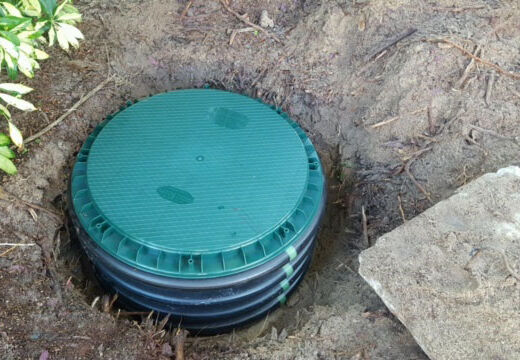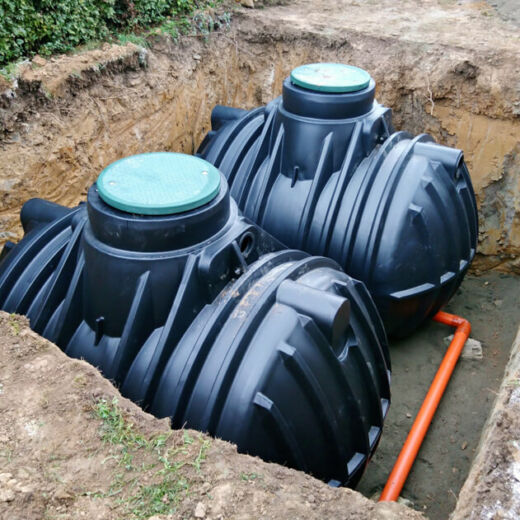For folks living in the city, it’s a worry-free experience – flush it down and away it goes, out of sight, out of mind forever. For acreage folks, it’s literally a daily concern to ensure only septic-safe practices are religiously followed or pay the consequences – back-ups, freezing, and foul odour, to name a few. What a pain in the… but there’s no choice. Sometimes, we feel like we’re at the mercy of the ‘septic gods’ to look upon us with kindness and compassion. Really.
And those who have ever had to call for septic services in Edmonton and surrounding areas know that it can be a stressful experience not knowing whether the issue can be repaired or require a costly replacement.
How Septic Systems Work
The first step to understanding septic system problems is to know the system. Septic systems are all made up of two independent functions working in concert – transport and treatment, one mechanical and the other biological. Easy, right?
The mechanical (or structural) is basic and simple. These components deliver or ‘transport’ the wastewater from the home back into the environment – a tank, some pipes, pressure, and the soil. Everything that happens in between is the ‘treatment’. Meaning the transition of raw sewage (wastewater) from toxic to safe and clean.
It’s a marriage of plumbing and science and has always been that way since the very first outhouse was filled in and the septic tank put in the ground. The big difference between then and now is how much we’ve learned about the science, ensuring the wastewater is as clean as possible before it goes out of sight and mind. The cost and risk of failing systems to ourselves, our neighbours and the environment headlines news cycles all too often.
So, with two systems working together, problems happen independently, but the result is the same – system failure, the wastewater doesn’t end up where it’s supposed to, or how it is supposed to.
Understanding Septic System Problems
Typically, problems occur in the final treatment zone, the septic field, mound or sand filter. When these areas begin to organically fail, the wastewater can no longer percolate and be filtered back into the environment safely.
Structural and mechanical problems involve a breakdown of the physical assets, the tank, pump, alarms, and piping. Both age and use can and will eventually require the replacement of them all. Simple septic system repairs and maintenance can prolong use, including:
- Pump replacements
- Alarm service (or installation)
- Regular cleaning every few years
- Periodic system health checks by a certified professional
Although certainly common, DIY (do it yourself) fixes are never recommended. It all seems pretty simple, but when something doesn’t go quite right, big bad things can happen. Really bad.
Treatment problems are certainly more complicated and vital; however, 100% of septic treatment issues can be resolved with proper evaluation and modern technology – without replacing the structural system, provided it’s working.
Professional trade-certified evaluation of all septic system concerns is always the best decision. We’re here to help, and decisions are always yours.
Failing Fields, Mounds & Sand Filters
When drainage areas (we call them ‘final treatment zones’), such as septic fields, mounds and sand filters, fail, there are only two possible causes. Either the lines are broken or the most common reason is organic saturation as a result of age and use.
The first is obvious, so we’ll focus on the latter. Organic failure occurs when the particulate in the wastewater builds up in the soil over time, slowing the wastewater from going down until, eventually, it won’t at all. The drainfield area is a literal filter – as the wastewater flows through it, the soil removes the pollutants, cleaning the water for safe re-entry into the environment. That is its job.
The Achilles’ heel is the same as the advantage. As a very effective filter, the organic matter remains in the soil as a black tar-like substance called ‘biomat’. This goes on building up for many years and gets thicker and thicker until, eventually, the water can no longer filter downwards, and it appears at the surface as soft mushy ground or pools of wastewater.
Make no mistake, this is raw sewage and is very toxic while it flows to who-knows-where. Aside from the health and safety concern in summer, eventual freezing in winter is almost assured. The water will remain near the surface for much too long, turning into solid ice underground. The good news is our certified technology can fix the problem permanently, year-round.
Over 80% of Septic Issues Qualify for Repair vs Replacement
It’s that part of acreage living we really don’t want to think about – the cost of replacing the entire septic system. What’s most frightening is the cost, averaging north of $35,000 to well over $50,000, not to mention ripping up the yard that won’t recover for several years. It’s a literal nightmare to even think about, but if the system is failing, something has to be done by law. The Alberta Safety Codes Act requires homeowners to ensure wastewater (septic) systems are operating safely and in compliance or face significant fines of up to $100,000.
Breathe – most can be repaired if the failure is caught in time without the need for system replacement. Qualifying a septic system for repair relies on trade-certified professional technicians observing the problem onsite to confirm the issues and the cause to determine the best course for repair. No two septic systems are exactly the same, and each problem has its unique solution. Unfortunately, not all can be saved. Time is of the essence when a problem is first noticed to call for help.
The good news is that over 80% of septic system failures can be qualified for repair, avoiding the requirement for replacement. New and advanced technologies have been certified and approved for us to effectively recover failing systems with outstanding results and guaranteed performance.
Onsite assessments are encouraged – contact us online or call us at (789) 640-1518 to qualify for septic system remediation and repair.




